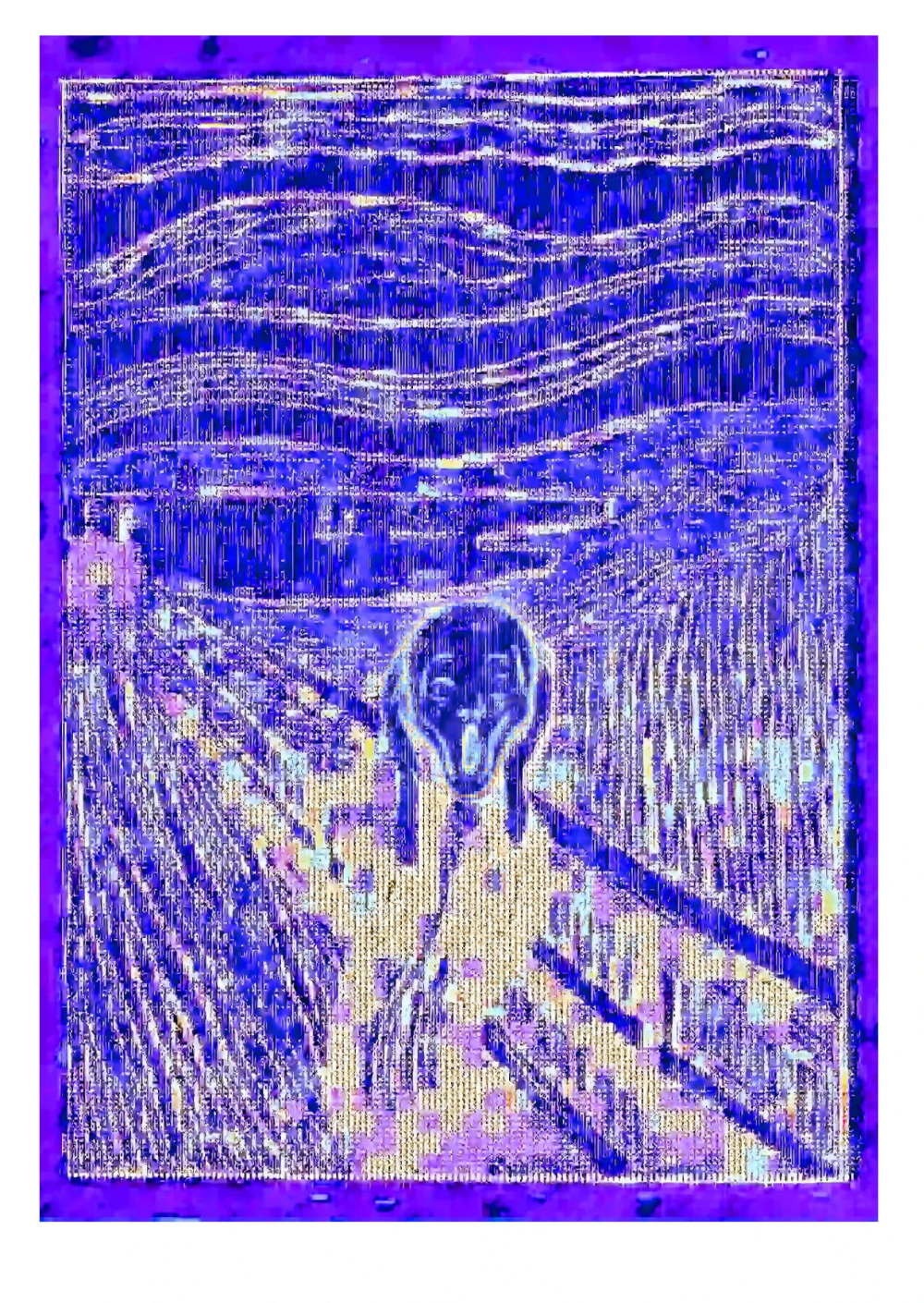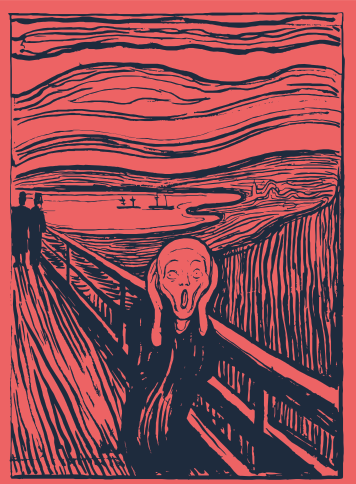Asprey Studio's Scream
Edvard Munch’s The Scream (1893) is one of the most recognisable artworks of modern times. The agonised face in the painting has become a powerful symbol of the anxiety inherent in the human condition and modern society. Asprey Studio has drawn inspiration from the universal anxiety conveyed by this iconic image, creating its own version of the original lithograph (1895), sourced from the Art Institute of Chicago via Bridgeman Images. The Silver Scream was born, followed by the digital variations.

Silver Scream
Silver Scream is a series of 10 unique pieces in sterling silver, meticulously handcrafted and finished by master silversmiths and engravers at Asprey Studio’s workshop.
Reflecting the sense of anxiety and decay represented in The Scream, each physical piece was created using an innovative controlled destructive process of oxidisation, which accelerates the natural ageing of silver.
Extensive research and development ensured the precise acceleration of oxidisation, resulting in a range of blues, reds, and browns that are unique to each piece. The lithograph was engraved onto silver, a long process that only master-level craftsmen can accomplish, and patina was added within the engraved channels to finish the process.
Each physical piece is linked to a digital artwork inscribed on Ordinals, establishing a connection to both the original lithograph and Asprey Studio’s version through parent-child inscription. The 10 physical pieces have now sold out, with the piece 4/10 sold at auction at Christie’s on 11 June 2024 in the Beyond the Screen auction.

CORRUPTED SCREAM
If oxidisation in Silver Scream represented a controlled destructive physical process, Corrupted Scream takes this concept into the digital realm.
This piece was created by corrupting the digital file, which mirrors the ageing of silver in a digital format. A process that results in another interpretation of the “corrupted soul” of our modern society.
Each digital Ordinal artwork comes with an optional large Museum Heritage print. Prints are available only for one month after release. Each physical piece is linked to a digital artwork inscribed on Ordinals, connected to the original lithograph and Asprey Studio’s version using parent-child inscription, pioneering a new method to trace provenance of the physical and digital piece.
15 variations are available. Each Ordinal is priced at 650 USD.

ASCII Scream
ASCII Scream is a binary version of The Scream coded from the original lithograph into ASCII format. The original lithograph is converted into binary format by an algorithm, originating a digital version of the artwork composed entirely overlapping 1s and 0s.
ASCII Scream captures the essence of Munch’s original work through the lens of computer technology. The unsettling visual effect, evoking the sense of angst, is achieved by slightly offsetting the red, green, and blue binary layers, with some layers left uncoloured. This digital portrayal is a testament to the intersection of art and technology, where machine coding brings a new perspective to a classic piece.
Each digital Ordinal artwork comes with an optional large giclée print. Prints are available only for one month after release. Each physical piece is linked to a digital artwork inscribed on Ordinals, connected to the original lithograph and Asprey Studio’s version using parent-child inscription, pioneering a new method to trace provenance of the physical and digital piece.
5 variations are available. Each Ordinal is priced at 650 USD.

Variations
Using the original lithograph, converted to vector format, a series of coloured variations, some with animated elements, make up the rest of the digital collection. These variations are inspired by the colours of the original The Scream. The Scream Variation collection comprises 100 versions, each distinguished by a blend of rarity and unique traits.
The artists who contributed with their interventions are HARTO (10 variations) and OSF (12 variations).
Each Ordinal is priced at 450 USD.

Parent-child inscription
Parent-Child allows inscriptions to form a family tree that is immutably recorded on Bitcoin Ordinals. Parent inscriptions can have Child inscriptions, and all the children form a collection on Bitcoin with clear provenance.

EDVARD MUNCH (1863-1944)
Edvard Munch, born in 1863 in Norway, grew up in Christiania (now Oslo) within a family connected to the arts and academia. He was deeply shaped by personal tragedies, including the death of his mother and sister from tuberculosis at a young age. These early losses instilled profound feelings of anxiety and fear, which permeated his work.
Munch is often associated with Symbolism and Expressionism, movements that sought to express inner emotions rather than simply depict the external world. His artwork explored complex themes of life, death, love, and existential dread, with many of his pieces evoking a profound sense of isolation and fear. The themes of death and mourning are reflected in much of his work, including The Sick Child and The Madonna, where he juxtaposes life’s fragility with the intensity of human emotion.
His works are a vivid representation of psychological expression, an early precursor to the broader Expressionist movement that emerged in Europe in the early 20th century. The emotional resonance in his art reveals how deeply personal experiences, particularly loss, shaped his ability to express universal human emotions that resonate to this day.





